Planet lovers can rejoice: one of the finest jewels of the solar system in returning to the evening night sky.
The planet Saturn reaches opposition next month on May 10th. This means that as the Sun sets to the west, Saturn will rise “opposite” to it in the east, remaining well positioned for observation in the early evening hours throughout the summer season. In fact, we’ll have four of the five naked eye planets above the horizon at once for our evening viewing pleasure in the month of May, as Jupiter also rides high to the west at sunset, Mars just passed opposition last month and Mercury reaches greatest eastern elongation on May 25th. Venus is the solitary holdout, spending a majority of 2014 in the dawn sky.
Saturn will shine at magnitude +0.3 this month and its disk spans an apparent 19,” or 44” if you take into account the apparent width of its rings. The rings are currently tipped open 22 degrees with respect to our line of sight. The ring opening is widening, and will reach a maximum of over 25 degrees in 2017 before the trend reverses. Anyone who remembers observing Saturn back in 2009 will recall that its rings were edge on to our view. This widening of Saturn’s rings also lends itself to a curious effect: although we’re in a cycle of oppositions that are getting farther away — Saturn is 12.5 million kilometres or 0.083 Astronomical Units (A.U.s) more distant in 2014 than it was during opposition last year as it’s headed towards aphelion in 2018 — its widening rings are actually making it appear a bit brighter.
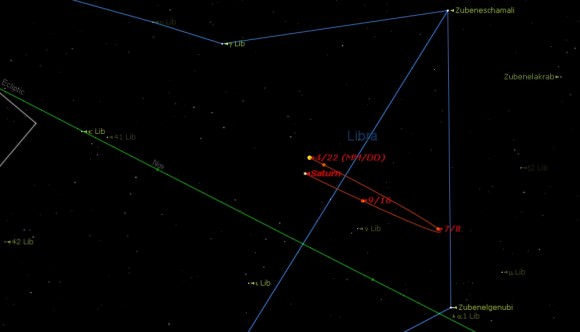
This year’s opposition will find Saturn in the astronomical constellation of Libra, where it’ll spend most of 2014. Oppositions of the ringed planet are set to continue to “head south” until 2018, and won’t occur north of the celestial equator again until 2026. I remember when oppositions of Saturn returned to the constellation Virgo a few years back — where I had first looked at it with my 60mm Jason refractor as a teenager — and realizing that I had now been into observational astronomy for roughly one “Saturnian year.”
The ancients had little knowledge of how unique Saturn was. The faintest and slowest moving of the classical planets, even Galileo knew that something was up when he turned his first primitive telescope towards it. His sketches depict Saturn as something similar to a double handled coffee cup, a testament to how poor his view really was. It wouldn’t be until Christiaan Huygens in 1655 that the true nature of Saturn’s rings was deduced as a flat and separate feature from the disk.
At opposition, the disk of the planet casts a shadow straight back from our point of view. This vantage slowly changes as the planet moves towards eastern quadrature on August 9th and we get a glimpse slightly off to one side of the planet. After opposition, the shadow of the disk can again be seen casting back onto the rings.
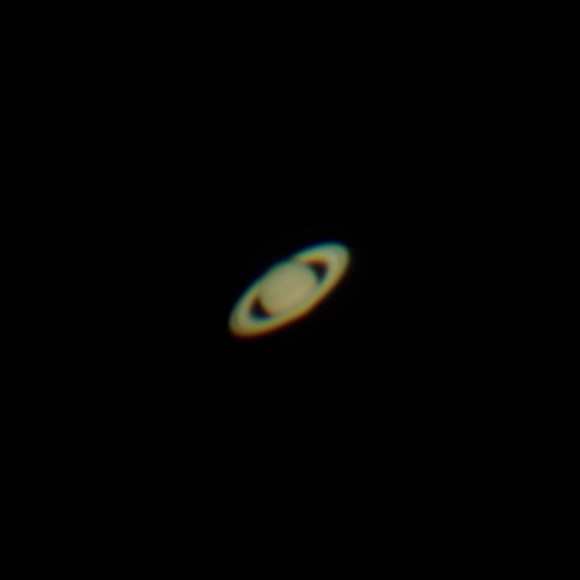
Another interesting phenomenon to watch out for near opposition is known as the Seeliger effect. Also sometimes referred to as the “opposition surge,” this sudden brightening of the disk and rings is a subtle effect, as the globe of Saturn and all of those tiny little ice crystals reach 100% illumination. This effect can be noted to the naked eye on successive nights around opposition, and will get more prominent towards 2017. Coherent-backscattering of light has also been proposed as a possible explanation of this phenomenon. Perhaps a video sequence capturing this effect is in order for skilled astro-imagers in 2014.
Through a small telescope, the first feature that becomes apparent is Saturn’s glorious system of rings. Crank up the magnification, and you’ll note a dark groove in the ring system. This is the Cassini Division, first described by Giovanni Cassini in 1675.
Here’s a challenge we came across some years back: can you see the disk of Saturn through the Cassini Division? Right around opposition is a good time to attempt this unusual feat of visual athletics.
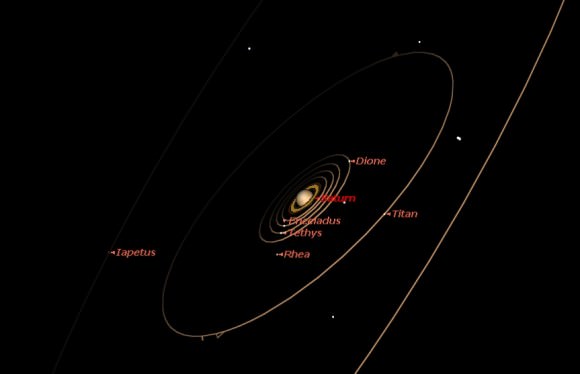
Saturn’s large moon Titan is an easy catch at magnitude +8 in a small telescope. Titan is the second largest moon in the solar system. Place it in a direct orbit about the Sun, and it would be considered a planet, no problem. 7 of Saturn’s 62 known moons are within reach of a small telescope. In addition to Titan, they are, with quoted magnitudes: Mimas (+13), Enceladus (+12), Tethys (+10), Rhea (+10), Dione (+11) and Iapetus. Iapetus is of special interest, as it brightens from +11.9 to magnitude +10.2 as it traces out its 79 day orbit. We always knew there was something unique about this moon, and NASA’s Cassini mission revealed the world to have two distinctly different hemispheres with vastly different albedos during its close 2007 flyby.
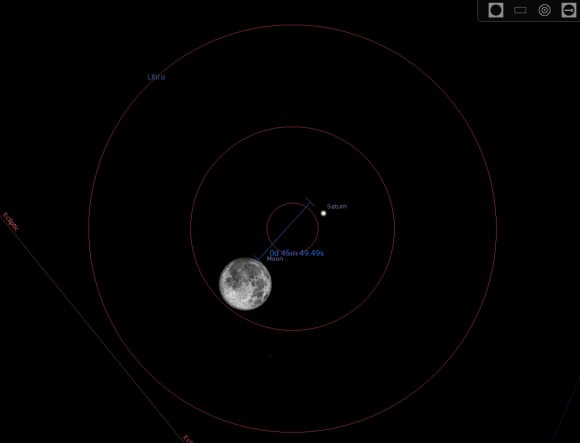
Also, be sure to check out Saturn on the night of May 14th — just 4 nights after opposition — as the Full Moon sits less than a degree south of the ringed planet. Can you see both in the same telescopic field of view? Can you nab Saturn next to the rising daytime Moon low to the horizon just before local sunset? The Moon will actually occult (pass in front of) Saturn for viewers based in Australia and New Zealand on the 14th. This is only one of 11 occultations — nearly one for each lunation — of Saturn by the Moon in 2014. Unfortunately, the best one for North America occurs in the daytime on August 31st, though it too may be observable telescopically.
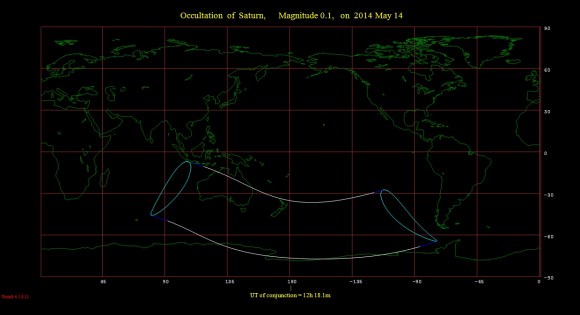
Finally, this evening apparition of the planet runs through northern hemisphere summer and fall until Saturn reaches solar conjunction on November 18th. So get those homemade planetcams out, send those pics in to Universe Today, and be sure to join in to the Virtual Star Party every Sunday Night… Saturn is sure to be featured!

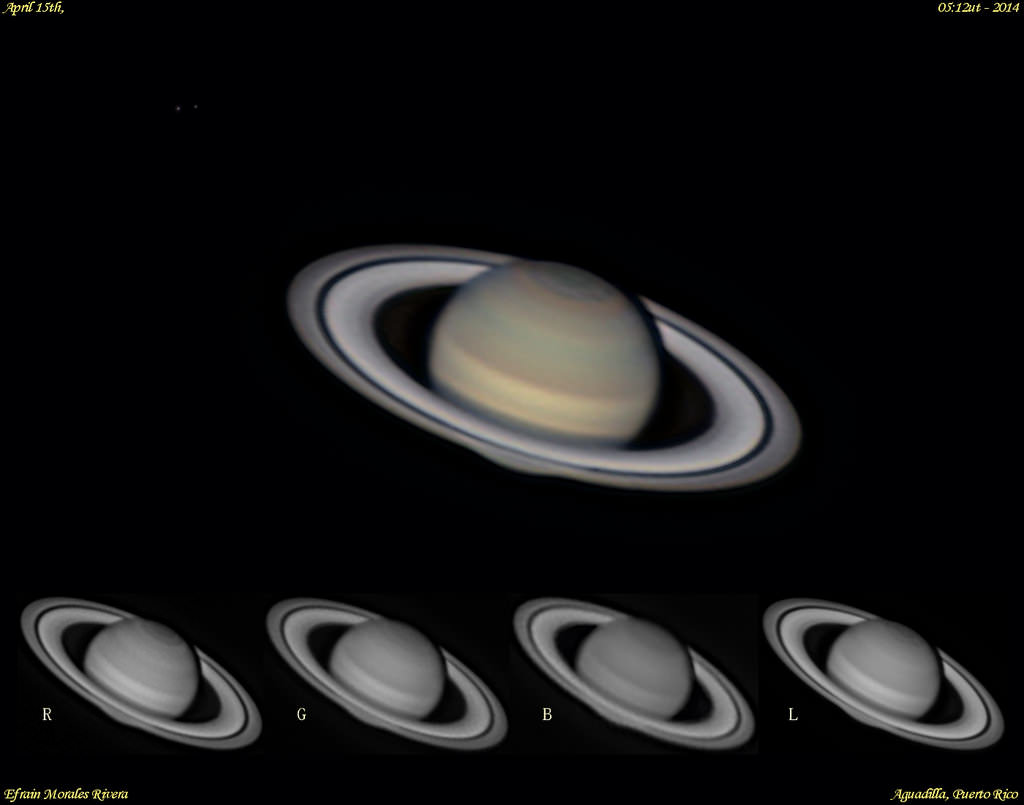
Excellent article.